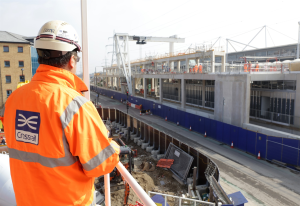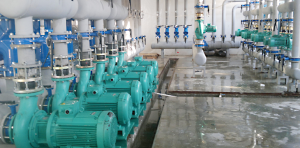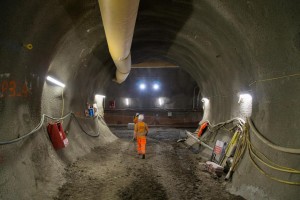
Official Event Partner: Infrastructure & Projects Authority (IPA)
Ahead of the UK Infrastructure Show 2018, we speak to the event partners about the importance of infrastructure. In today’s article we speak to Keith Waller, IPA Senior Advisor, and Keynote speaker at the UK Infrastructure Show.
In December 2017, the IPA published Transforming Infrastructure Performance (TIP), a plan to boost productivity and improve the performance of the UK’s infrastructure.
It targets better social, economic and environmental outcomes from infrastructure investment, better services for users and better value for money for taxpayers. Importantly, it also seeks to embed improved commercial approaches which support a productive, innovative and profitable supply chain.
The ambitions set out in TIP are aligned with other strategic programmes across government and industry, including the Industrial Strategy and the Construction Leadership Council’s Sector Deal, the Transport Infrastructure Efficiency Strategy and the Infrastructure Client Group’s Project 13.

The new Crossrail station at Custom House built offsite in Derbyshire
If TIP and these other programmes transform the infrastructure sector in the UK, what would that look like? What would the ideal decision-making, delivery models and operational strategies be?
● There would be improved decisions on what to prioritise, what and how to build, with clarity of whole life costs, performance and the wider benefits to be delivered to users and society.
● New commercial models would support innovation, boost competitiveness with a strong and productive UK supply chain that delivers safely and predictably.
● The productivity and sustainability of not just the construction sector, but of the wider economy would be boosted. Investment would be attracted at all levels of the industry and the competitive advantage of UK firms would increase.
● Intelligent infrastructure assets would perform measurably better through their whole life, meeting exacting standards of sustainability, resilience and availability – and would support the government’s wider social economic and environmental objectives for the UK.
Let’s consider a hypothetical major new infrastructure programme in the future.
The programme is proposed in response to meeting a strategic need identified in the National Infrastructure Commission’s National Infrastructure Assessment. It has clear outcomes identified which meet the infrastructure need, support the government’s wider socio-economic and environmental objectives, as well as deliver the needs of the local communities and users it will serve.

The alliancing approach used by Anglian Water in its @One Alliance build long-term alignment commercial models incentivising the supply chain to innovate at the procurement stage
Benchmarking for better performance
These outcomes will define the benefits to be delivered and the operational performance over the whole life of the project. Both outcomes and costs of delivery will be benchmarked against widely understood and established measures of cost, schedule and performance. As options for meeting these outcomes are developed and assessed, the benchmarks will play a clear role in decision making.
Alignment and Integration
With both direct and indirect impacts being considered, the programme will optimise opportunities from interdependencies across sectors and assets to support the wider benefits.
There will be a strong and productive industry ready to engage and shape the solution. The market will have a clear understanding of the in-service outcomes and needs of users and asset owners. It will work collaboratively with clients to develop the optimum commercial solution and approach for both delivery and operation.
Procuring for growth
Procurement will support commercial models which incentivise a long term collaborative approach based on value added not just services delivered. These business and commercial relationships will incentivise investment in research and development, innovation and skills, not simply drive to an unsustainable low initial price. In such a mature relationship, suppliers will understand their clients business needs and clients will understand the cost drivers in their suppliers (not just “the price” of the contracted service).

Bank Station Capacity Upgrade was procured in 2014 using the Innovative Contractor Engagement model developed by TfL
Smarter infrastructure
Capital delivery will become more productive, technology-enabled and sustainable. Greater proportions of infrastructure will be manufactured offsite to a higher, predictable quality. New skills will be created in hubs away from traditional construction sites. Site labour, waste, vehicle movements and carbon will all reduce. Delivery will be increasingly predictable in terms of time, cost and quality.
The new Crossrail station at Custom House built offsite in Derbyshire
Technology will support better, safer delivery and more effective operation. Smart sensors, big data and artificial intelligence will be exploited to optimise all phases of the design, construction and operation. Assurance processes throughout the investment lifecycle measure, support better outcomes and are fed back to inform future investment decisions.
Productivity improvements
As a result, the UK’s construction and overall productivity improves. The new skills and capabilities in UK industry will support export markets and continue to attract investment.
Clearly we are not there yet. But we are already seeing pockets of this best practice take place across the sector, such as the procurement at Bank Station, alliancing behaviours at Anglian Water and offsite construction on Crossrail. The challenge now is to build on these examples so that current best practice becomes business as usual in the future.
Government and industry are taking steps to begin the journey to this future ideal for UK infrastructure. With the IPA’s TIP programme, we have set out an ambitious programme for change. Now we need the input and support from across infrastructure professionals and industry to begin the transformation to high performing infrastructure.
For more information you can read the full Transforming Infrastructure Performance report or email ipa@ipa.gov.uk if you want to get involved in the programme.
Don’t forget to hear Keith’s Keynote speech at UKIS 2018: Book now.
To discuss exhibition or sponsorship opportunities please call 0845 270 7066 or email exhibitions@ukinfrastructureshow.co.uk
Alternatively to register as a delegate please click here
If you would like to read more articles like this then please click here.
The post Transformed Infrastructure Performance: A Vision for the Future appeared first on UK Construction Online.
Walang komento:
Mag-post ng isang Komento